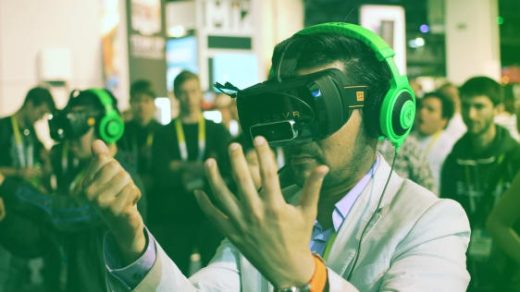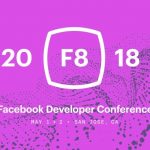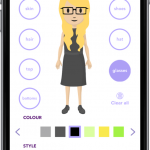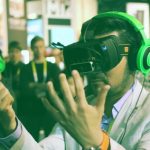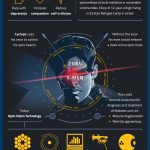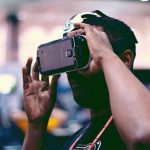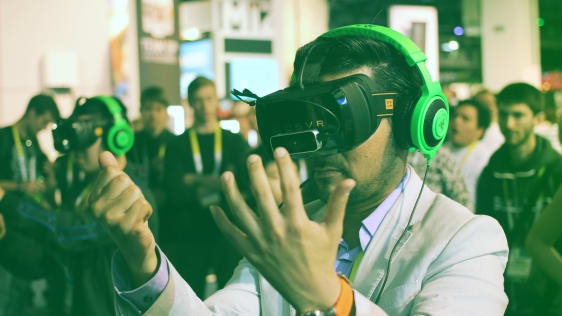How VR Is Good For Us, And Can Maybe Even Help Heal The Racial Divide
Virtual reality may only have become a consumer technology in the last couple of years, but as a medium, it’s been around for decades. And few have spent more time researching VR than Stanford professor Jeremy Bailenson.
After an initial hype cycle, consumer VR has leveled off to some extent, and while some analysts predict it will be a $38 billion business by 2026, there are a number of reasons it has yet to become a full-fledged mainstream technology. For someone like Bailenson, though, whether it’s mainstream or not isn’t the point. The tech is here to stay and it’s already changing everything from games to education to travel to entertainment.
That’s why Bailenson decided to put his history with VR to pen. The result is his new book, Experience on Demand, out this week from Norton. Recently, he sat down for an interview with Fast Company to explain what he wanted his readers to learn.
Fast Company: What’s the big message you’re trying to convey with the book?
Jeremy Bailenson: It’s for the smart person that’s heard a lot about VR, but really wants to understand the do’s and don’ts, both as a consumer, as well as a designer, or industry leader who’s deciding what to do for her company.
VR shouldn’t be used for everything. It shouldn’t be used to read email, or just kicking around for hours a day. It’s intense, so we reserve it for things that are impossible or dangerous to do in the real world, like a flight simulator, or things that are so expensive that we can’t do them easily.
Or things that would be counterproductive to do in the real world, but which you learn a lesson from. Here’s a nice example: If you cut down a tree in VR, you can learn about where your paper comes from, and our studies show that people use less paper when you force them to cut down virtual trees. But having people cut down physical trees would be a silly way to teach about deforestation.
FC: What are the most unexpected and interesting areas being impacted by VR?
JB: If you asked me this question 20 different times, I’d give you 20 different answers. Right now, I’m very [excited] about the democratization of VR, how technology from the company I co-founded, STRIVR, has gone from training elite athletes, training quarterbacks how to make decisions, to now being installed in all the Walmart training academies, and in 2017, more than 100,000 Walmart employees get better at their job by training in VR to deal with complex situations in their job.
FC: In the book, you suggest that by provoking empathy, VR can reduce the racial divide in America. How so?
JB: I want to be very careful when we talk about “racial divide.” There’s no magic solution to the problem, but we’ve been building simulations where you go in front of a virtual mirror, we change your identity, you can be older, a different gender, a different race. You could become disabled.
Then we network a second person into VR with you, and we show how prejudice feels first-hand when you’re in the body of someone else, when you’re walking a mile in their shoes, and you experience some racial or gender-type of harassment. And what our published work has shown for quite some time is that, not every single time, but in general, across all of our 15-20 studies in this area, when you become someone else in VR and experience a hardship, when you compare that to role-playing, the traditional method of training diversity, or when you compare it to watching a video or watching case studies, the behavior change tends to be magnified in VR compared to the other techniques.
FC: You have some concerns about VR. What dangers are you most worried about?
JB: I have a chapter on the downsides of VR. It was chapter 9 and we decided to move it up to Chapter 2, because I didn’t want to come off as a pure evangelist. VR has upsides and downsides. When we talk about VR’s downsides, the number one is distraction. People walk into walls, step on cats, get mugged on subways because they can’t see the world.
Number two is addiction, when social networking feels like the best party you’ve ever been to, when pornography feels like sex, when online gambling feels like you’ve gone to Las Vegas, can people actually leave the house?
Number three is simulator sickness. Over time your eyes get tired, and you get a little bit disoriented, so with prolonged use, you can get a little bit of discomfort.
And number four is modeling bad skills. My lab has been funded for some time by the U.S. Military, and I’m proud to help our soldiers get better, but when citizens have access to the software that gives you the muscle memory to perform combat, there’s issues with learning muscle memory of these violent acts that’s probably different than playing a normal video game or watching TV.
FC: You don’t want to come off as an evangelist, but ultimately, you are. So, is VR good for us, and why?
JB: This is why I’m writing this book. First and foremost, I believe in the First Amendment. I believe in free speech, and people get to do with media whatever they want, and I’m a firm believer, the U.S. Supreme Court ruled that content in video games is free speech, and the same, at least for now, applies to VR. I’m not here to say laws should prohibit you from doing things in VR. The standard I’ve come up with in this book is that VR is fantastic for things you can’t do in the real world. Whether it’s becoming someone else, or going to a place you can’t access, or traveling in time. But I don’t like VR as a medium for things you wouldn’t do in the real world.
In other words, if there’s some act that if you did it physically, you’d feel really bad about yourself, or you wouldn’t enjoy having done that physically, then it’s probably not a good thing to do in VR. So am I an evangelist for VR for the right use cases? Absolutely. What I’m trying to do with this book, is help people understand psychologically what we know about things done in VR, so they can make a better-informed decision for what they want to do.
Note: This interview was edited for brevity and clarity.
Fast Company , Read Full Story
(17)

